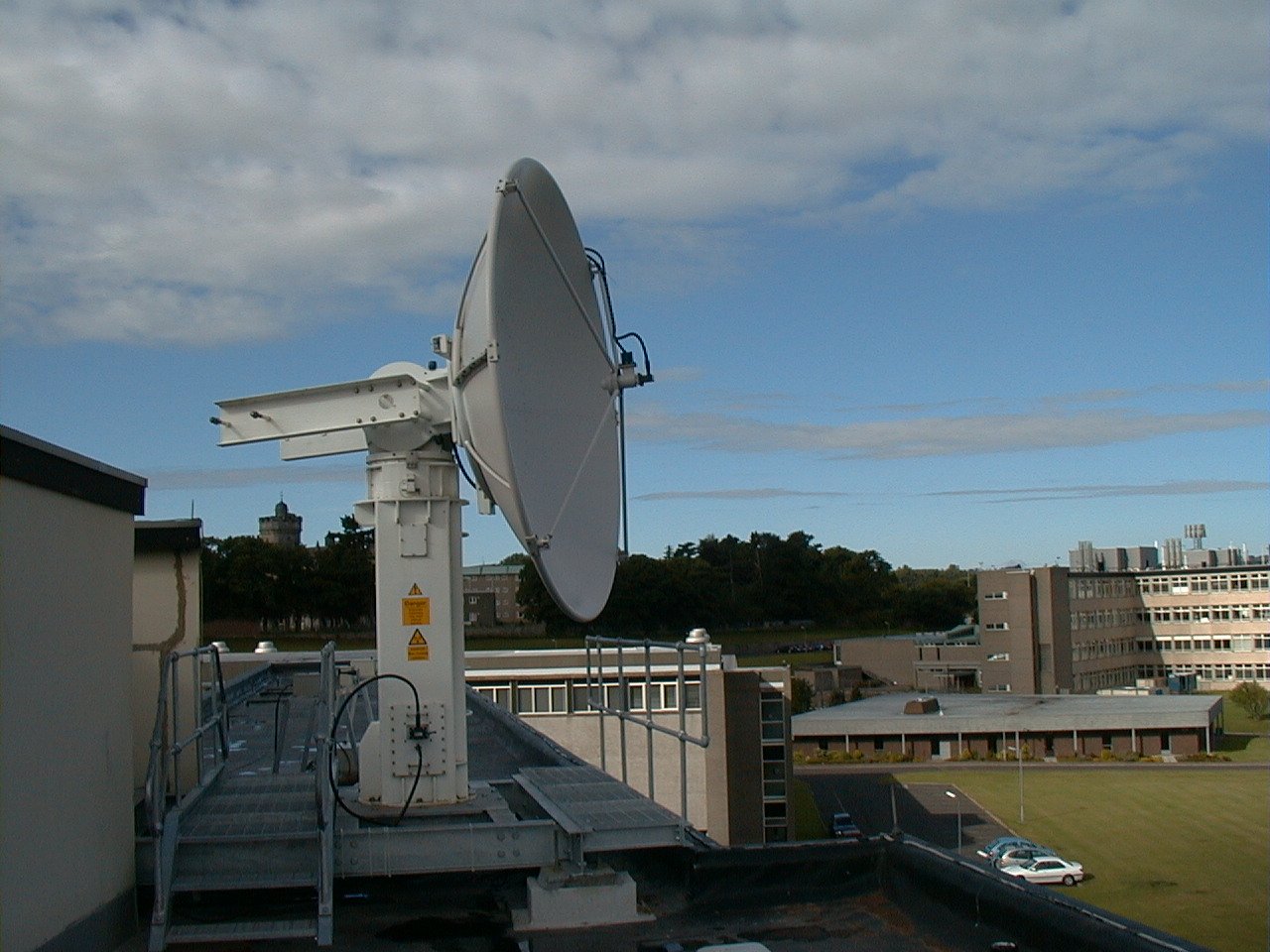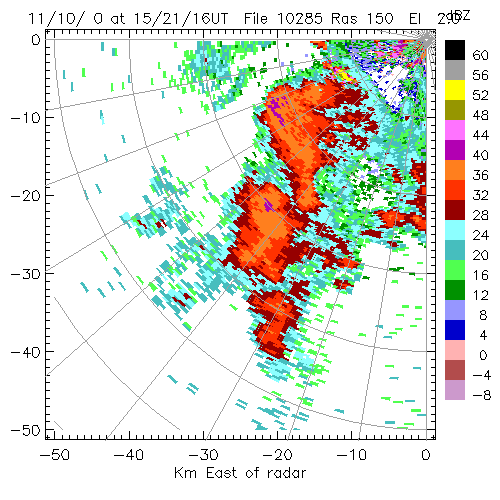











Last update
16 Jun 2011

This page is maintained by
Mark Fielding
All content Copyright © The University of Reading unless otherwise stated.

 |
The S-band VIPER radar (formerly known as the 'Scottish' radar) was originally built to study the reliability of microwave radio links during heavy sleet and snow events in Scotland. Since 2006 it has been relocated to Chilbolton. The VIPER radar is a 3-GHz scanning Dopper weather radar, capable of making depolarisation measurements. It operates on a small 3-metre dish with a 3kW peak output power. Currently a new data acquisition system is being designed for the radar, along with other modifications to allow it to operate semi-continuously at vertical. Because the attenuation of the radar signal in rain at 3GHz is much lower than for either of the cloud radars, data from the VIPER radar should allow us to correct for that attenuation, and to make estimates of the ice water content in thick frontal cloud above precipitation; this is currently a weakness in our cloud observations and comparisons with model data. |
|
The radar records reflectivity, mean Doppler velocity, spectral width and linear depolarisation ratio. A typical PPI scan of radar reflectivity from a precipitation event over Chilbolton is shown to the right. Specifications
Beamwidth: 2.3o
|

|
